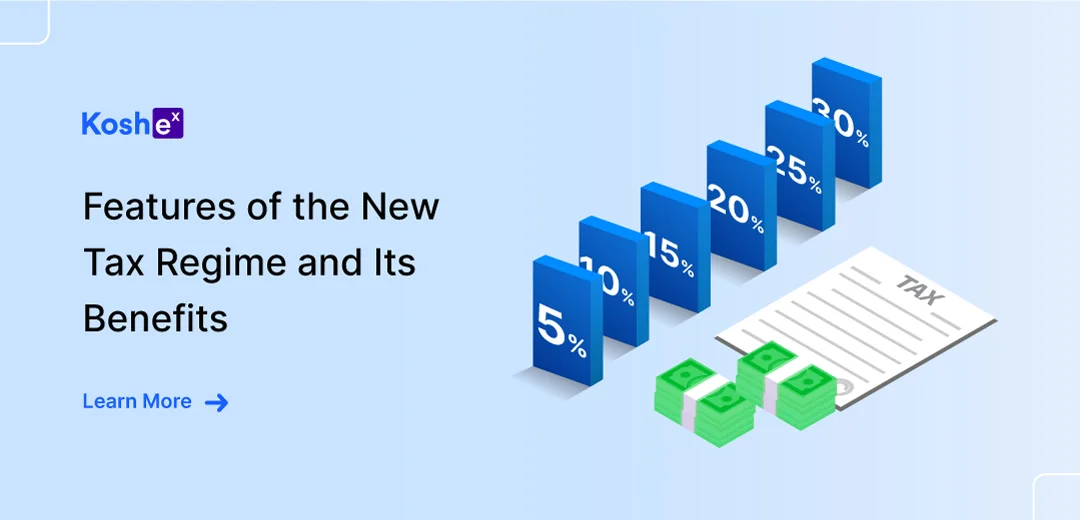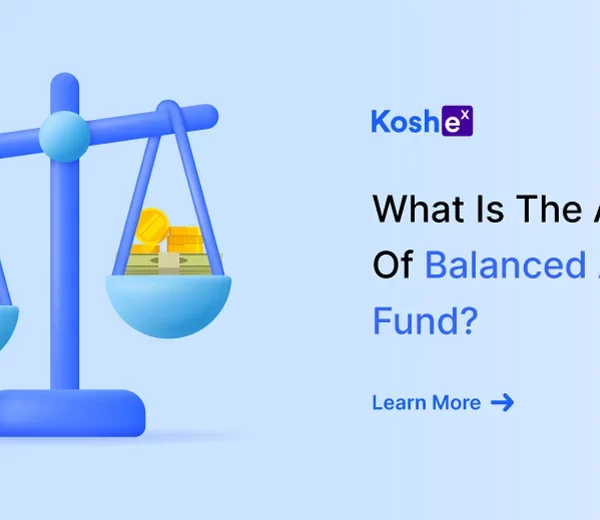A few years back, the Indian government introduced a new tax regime to help the country’s taxpayers. In the 2023 Budget, the government raised the tax slabs for the new tax regime. This move was made to ease the tax burden on Indians further.
In this article, we will be learning about the difference between old and new tax regimes, their benefits, and how you can utilize the new regime smartly to save taxes.
In the 2020 Budget, the Government of India introduced a new optional tax rate regime for individuals and the Hindu Undivided Family (HUF). Tax deductions or exemptions were not allowed when the new regime was introduced. Fast forward a few years later, in the 2023 Budget, the new tax regime was made the default one. Standard deductions and new tax slabs were introduced in the new tax regime.
Here is the list of features of the new tax regime.
Features Of The New Tax Regime
In order to understand the new tax regime better, we need to understand its features.
Standard Deduction
As mentioned above, this becomes the only deduction that is carried over to the new regime. So, a deduction which is a reduction of the taxable income is available in the new tax regime too. It is to note that a standard deduction of ₹50,000 is available under the old tax regime.
New Tax Slabs
Earlier, the slabs in the new tax regime were in blocks ₹2.5 lakhs each. This means that the income from ₹2.5 lakhs to ₹5 lakhs was taxed at 5% and then the next block was taxed at 10% and so on.
With the 2023 Union Budget, the new regime has seen some revisions in the tax slabs. The blocks have now been revised to ₹3 lakhs each. According to the new revisions, you don’t have to pay any tax for annual income until ₹3 lakhs. From ₹3 lakhs to ₹6 lakhs, you would have to pay 5% tax, 10% tax for an income of ₹6 lakhs to ₹9 lakhs, and so on.
Rebate
Under Section 87A of the Income Tax Act, there is a rebate available for Indian taxpayers. This lowers the tax that you have to pay if the taxable income is below a certain limit. The current limit is ₹5 lakhs under the old regime and ₹7 lakhs under the new regime. This means more income will not have a final tax outflow.
Difference Between Old Tax Regime & New Tax Regime
There are a few differences between the old tax regime and the new tax regime.
Tax Slabs
One of the major differences between both regimes is the tax slabs.
| Old Tax Slabs | New Tax Slabs | Tax Rates |
|---|---|---|
| Up to ₹2.5 lakhs | Up to ₹3 lakhs | NIL |
| ₹2.5 – ₹5 lakhs | ₹3 lakhs – ₹6 lakhs | 5% |
| – | ₹6 – ₹9 lakhs | 10% |
| – | ₹9 lakhs – ₹12 lakhs | 15% |
| ₹5 – ₹10 lakhs | ₹12 lakhs – ₹15 lakhs | 20% |
| Above ₹10 lakhs | Above ₹15 lakhs | 30% |
Deductions
As discussed above, the old tax regime allows deductions and exemptions. However, if you choose the new tax regime, you would have to forgo most of the deductions and exemptions.
But the good news is that, in the 2023 Union Budget, the government has extended the benefit of a standard deduction of ₹50,000 in the new regime. Earlier, no deduction was available for people opting for the new regime.
When you choose the old regime, below are the exemptions and deductions you will be receiving:
- Standard Deduction
- House Rent Allowance (HRA)
- Leave Travel Allowance (LTA)
- Entertainment Allowance
- Professional Tax (PT)
- Interest paid on housing loan u/s 24
- 80C deductions such as LIC, home loan principal, NSC, ELSS funds, etc.
- 80D deductions – health insurance paid for self and family
- 80DD and 80DDB deductions related to disability
- Interest paid on education loan u/s 80EE
- Donations u/s 80G, 80GGA, 80GGC
Less Paperwork
When you choose the new tax regime, you do not have to worry about documentation and compliance as most of the exemptions and deductions are not available. However, if you choose the old regime, you would need to submit all the proofs, and in many cases, the employee needs to submit those proofs to the employer to claim deductions and exemptions.
More Take-Home Salary
The new tax regime offers an opportunity to increase the take-home salary of the taxpayer, as they are required to invest upfront. On the other hand, the old tax regime lowers take-home salary as taxpayers are required to invest in certain long-term investments to avail of the benefits.
Benefits Of The New Tax Regime
There are several benefits when you choose the new tax regime.
Suitable For People With Low Tax-Saving Investments
If you have low tax-saving investments, the new tax regime will be extremely beneficial for you. The new regime comes with seven lower tax slabs. Anyone paying taxes without claiming exemptions under the existing system can benefit from paying a lower upfront rate of tax.
For example. if your gross total income is ₹12 lakhs, you would have to pay more tax under the old regime if your investments are less than ₹1.9 lakhs. Hence, if you invest less in tax-saving schemes, choose the new tax regime.
More Flexibility
The new tax regime provides flexibility to the taxpayer to invest their money as they prefer. When you choose the new tax regime, there is no mandatory requirement to invest in tax-saving schemes and insurance plans. This means you can invest in instruments that align with your financial goals.
Easy Filing System
The other benefit of choosing the new tax regime is that you do not have to worry about complex filings, meaning there would be fewer mistakes in filing. Finance Minister Nirmala Sitharama said that the process under the new income tax structure will be much easier for taxpayers. Hence, if you are a person with no or few investments, you will find it much simpler to file taxes under the new system.
Reduced Income Tax Fraud
The exclusion of exemptions helps in containing income tax fraud. There are several cases, where people have inflated their income tax return filing for claiming more tax refunds. Since most of the exemptions are gone under the new system, the scope of misusing exemption rules also reduces.
In The End…
The new tax regime is beneficial for those taxpayers who haven’t invested much in tax-saving instruments. The new regime gives the flexibility to make investments in those instruments that suit your financial goals, rather than investing solely for saving taxes.
If you have just started working, you can opt for the new tax regime, especially if you don’t invest in any tax-saving schemes.
On the other hand, if you have already invested in insurance policies and ELSS funds, you can go for the old regime. We hope this blog helped you understand more about the new tax regime, its features, and its benefits. If you need further help choosing the right tax-saving investment, create an account with Koshex and talk with our experts today!
If you wish to learn more about personal finance, money management, and smart investment solutions, head over to our website and make sure to read our blogs. Feel free to contact us if you have any questions related to savings and investments!









Leave a Comment